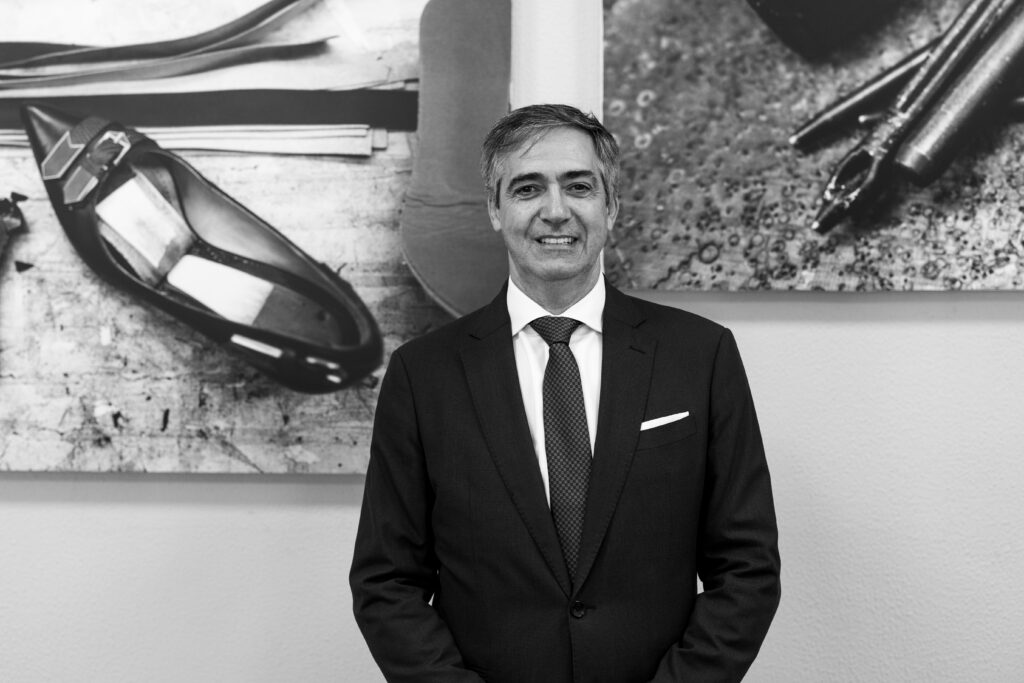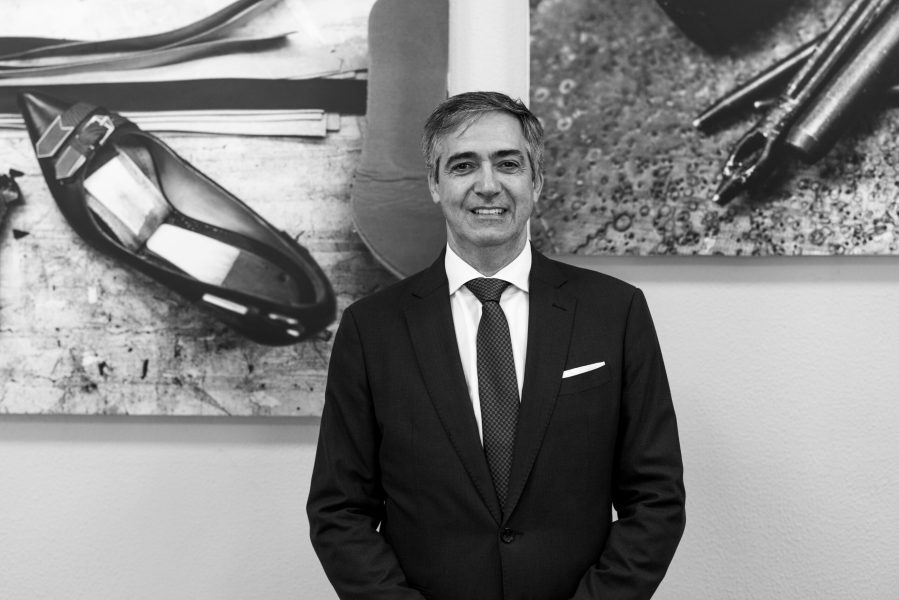“The transition from the PRR to the new cycle is underway”

Launched amid the 2020 pandemic, the PRR aims to support Investments and reforms that will have a significant impact on the economy and society, making them more resilient on the path to the climate and digital transition.
Led by Fernando Alfaiate, the Recuperar Portugal team closely monitors the implementation of this Investment plan in partnership with the relevant entities, beneficiaries, government departments, and the European Commission. The team recently visited the footwear sector, which has investments totalling over 100 million euros on its agenda under the PRR.
According to Fernando Alfaiate, “sectors such as footwear have shown remarkable adaptability and leadership”.
You recently visited the footwear sector, which is currently involved in two major projects under the PRR. Which innovations would you say were the most surprising during your visit?
Visiting the footwear sector, particularly the BioShoes4All project, revealed a sector that is deeply committed to sustainable innovation. I would emphasise the clear focus on bio-based materials, circular economy solutions, and the integration of high-tech technologies applied to the product’s value chain, as well as pioneering experiences in areas such as bioeconomy and circular economy. The BioShoes4All project’s emphasis on bio-based materials signals a paradigm shift, combining national manufacturing traditions with sustainability and digital innovation. The combination of traditional expertise and cutting-edge technologies is particularly impressive, especially when large-scale partners from the business, academic and scientific communities are involved – a sign of an unprecedented collaborative approach.
The PRR was launched in 2021, at a time when the European context was quite different from the one today. Considering the ongoing impact of the war in Europe, have the PRR’s goals remained unchanged or been adjusted to reflect these new realities?
The structural objectives of the PRR – the dual climate and digital transition; strengthening economic and social resilience; and promoting territorial cohesion – remain valid and are now more relevant than ever. However, successive reprogramming has enabled the PRR to adapt to new circumstances, increasing strategic autonomy in areas such as energy, critical industries, and logistics chains. The REPower EU programme is a good example of this. The flexibility demonstrated, particularly through the mechanism for amending the plans, has enabled Member States to adjust their priorities while maintaining focus on structural transformation.
In practical terms, in what ways can the PRR contribute to the structural transformation of the Portuguese economy?
The PRR offers a unique opportunity for Portugal to lead the transition to a more sustainable, digital and resilient economy. In the case of the bioeconomy, the mobilising agendas play a particularly relevant transformative role. Projects such as BioShoes4All demonstrate how scientific and technological knowledge can be enhanced to promote solutions based on biological, renewable and sustainable resources.
By supporting the development of high value-added emerging value chains, the PRR enables traditional sectors such as footwear to modernise and stimulates new production models based on circularity, innovation, and reducing the ecological footprint. This investment has a real impact, reinforcing the competitiveness of the Portuguese economy, boosting internationalisation, and preparing the country for the strategic challenges of the next decade.
Do you believe the collaborative approach adopted by BioShoes4All, which involves over 70 partners, could be an example for other industrial sectors in Portugal to follow?
Without a doubt. The collaborative approach adopted in the BioShoes4All project demonstrates that it is possible to bring together companies, research centres, universities and public entities around a shared goal of sustainable innovation and value creation based on knowledge. This approach has enabled us to scale up our results, accelerate technology transfer and promote integrated solutions that have an economic and environmental impact.
Managing a consortium of this size naturally poses considerable challenges, requiring demanding coordination and continuous alignment between entities with diverse profiles. In this context, the role of the consortium leaders is absolutely crucial: they ensure project cohesion, coordinate contributions, and fulfil the defined objectives. The success of BioShoes4All demonstrates that ambitious projects with a transformative impact can be achieved with strong leadership and a shared vision.
What are, in your view, the main challenges to executing projects financed by the PRR in the industrial sector, and how are these challenges being overcome?
Demanding execution deadlines and volatile global markets have been two of the main challenges. However, we have responded by implementing mechanisms for close accompaniment, process simplification, and strengthening the connection between executing entities and beneficiaries. Having a mission structure in place has enabled us to be more agile and focused on results.
Which mechanisms are being used to monitor and evaluate the success of projects supported by the PRR, as well as their economic and social impact in Portugal?
The PRR has a robust monitoring system based on execution indicators, milestones, and targets that have been defined in contracts with the European Commission. At the same time, assessments are underway to analyse the economic and social impact of the investments made. The Recuperar Portugal portal ensures transparency by providing accessible, up-to-date open data on the implementation of the plan, thereby promoting a culture of accountability to citizens.
With the PRR approaching its final phase, what instruments or programmes will succeed it in driving the growth of the Portuguese economy?
The transition from the PRR to the new cycle of public policies will be carried out strategically by coordinating Portugal 2030 funds, InvestEU instruments, and the Strategic Technologies for Europe Platform (STEP). The priority will be to ensure continuity of the transformative investments initiated under the PRR, thereby guaranteeing a trajectory of sustainable, innovative and cohesive economic growth.
In your opinion, what does the future hold for the Portuguese economy, particularly for sectors such as footwear?
Sectors such as footwear have demonstrated notable adaptability and leadership in incorporating innovation and sustainability. With the support of PRR financing, I believe the sector will continue to establish itself internationally by investing in innovation, design, quality, as well as ecological and ethical processes. In the future, there will need to be a continuous focus on differentiation, digitalisation, sustainability, and internationalisation. These are the pillars on which the footwear sector must continue to build to gain a competitive advantage and create added value.
Photo: Vânia Carneiro
